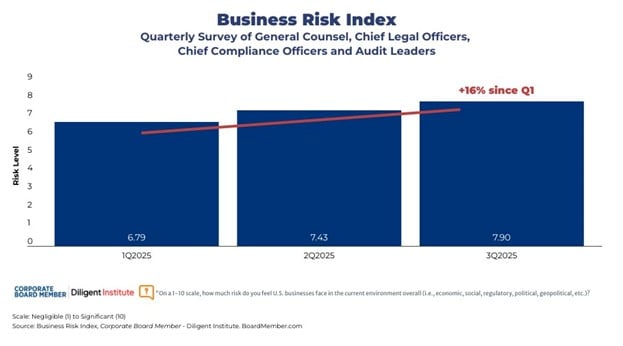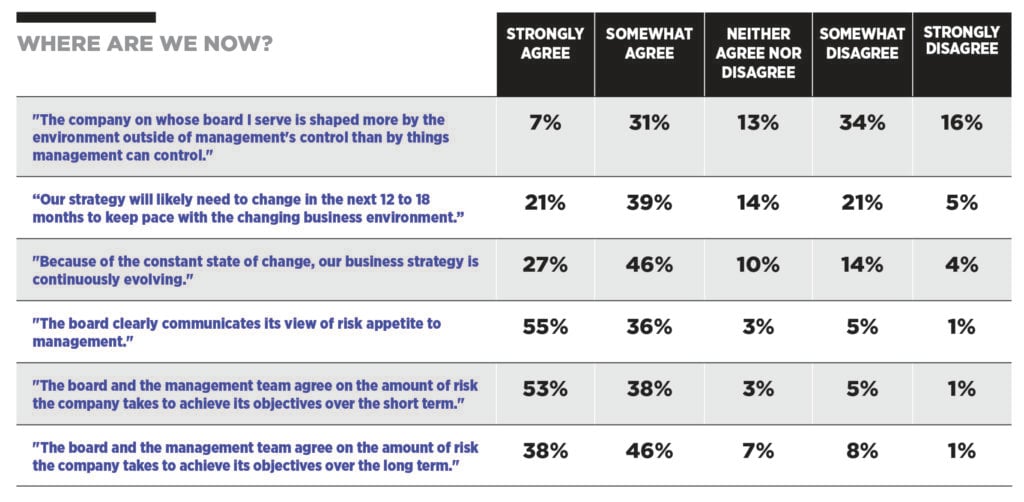In recent years, we’ve seen boards populated with smart, veteran business leaders epitomizing good governance—and others utterly fail at it. Clearly, a stellar board is a lot more nuanced than gathering competent, experienced executives with copious experience and charging them with following governance guidelines. To dig into the finer details that can make all the difference in board performance, we turned to a leader with a wealth of experience on both sides of the boardroom table: Former chairman and CEO of Schering-Plough and Pharmacia Fred Hassan, who has served on the boards of Time Warner (before its $85 billion acquisition by AT&T in 2018) and Amgen (until 2021). He presently serves on the boards of Prometheus, BridgeBio and Precigen.
Few people have faced as many challenging business situations as has Hassan, who got to run not one, not two, but three global pharmas, and serve as chair at two more, Bausch & Lomb and Theramex, all of which he rescued from turnaround situations. Besides moving big dials, he also founded and scaled up a family business that he sold to Nestlé in 2020. Over the years, he’s coached numerous CEOs, including leaders of portfolio companies of Warburg, where he continues as director after a stint as managing director.
Corporate Board Member’s Dan Bigman recently had a chance to talk with Hassan about how directors can up their games to make a real difference in the boardroom. Excerpts of that conversation, edited for clarity and length, follow.
Whenever something goes really wrong at a company—Theranos, GE, many others—the big question that always comes up is, where was the board? In your experience, what happens in cases like that? Where was the board?
When breakdowns occur, they occur for different reasons. The biggest reason is that the CEO has mesmerized the board in various ways. And it could be a track record, it could be the appreciation the CEO is getting from the outside world, especially from the investors, or it could be just a very great vision that the CEO is baiting that’s causing the board to get very mesmerized by the CEO.
Where boards really miss is the sense of oversight, which is so important. There are different roles that boards play. And sometimes boards get confused about what roles to play at various times. I call that situational leadership. There are times when boards should play the role of advisers and mentors, which is always a more pleasant part of a board’s duties. There are other times when a board needs to oversee the company’s procedures and ways of working. There are other times when boards have to ask some very tough questions on strategy and execution and satisfy themselves that that that is appropriate. And then there are other times when boards have to make an assessment of the CEO and make a decision whether or not that CEO is the right person going forward.
We as board members like to drift toward the comfort zone, which is to play the roles of advisers, coaches, buddies to the CEO, and that’s perfectly fine. But boards have to understand that they have other roles to play under different circumstances. Sometimes you will have to ask the tough questions.
Are there “tells” in the boardroom that it’s time to shift between the roles the board should play?
There are signals that suggest a shift is in order. For example, let’s say the CEO relentlessly keeps repeating, “We are going to grow 15 percent EPS year after year after year,” and it’s an industry like pharma, where you have ups and downs depending on new products coming out or the patents of old products expiring. I would, as a board member, first of all, understand the business and understand that there’s volatility in the business. So when a CEO keeps making such a pronouncement I have to ask myself, why is that the core mantra of the company? Is that really going to create a sense of purpose among the employees? Is that going to create excitement? Because employees get more turned on by doing good things for society than a steady 15 percent EPS growth.
And finally, is this person going to come under pressure to do things to make that goal year after year when that pressure was not needed in the first place, by coming up with more realistic goals that reflect the true business model of the company?
If board members become too chummy with the CEO or feel excessively obligated because the CEO brought them onto the board, there can be an implied loyalty, a bias not to ask difficult questions. It’s not that board members are dishonest, it’s just that they may have a bias not to ask uncomfortable questions. Board members are not likely to easily go into the discomfort zone. Because when you’re asking tough questions of the CEO, that is not the most comfortable time for the board.
How do you make sure you’re creating the right atmosphere so that you can have dissension, honest discussion and avoid some of the pitfalls? How do you curate the right culture to really be a solid board?
Whether or not the CEO is the chairman of the board, it doesn’t matter that much. The CEO shapes the culture of the corporation, and the CEO shapes the culture of the board. The board absolutely responds to the CEO’s behavior, body language, the way the CEO involves the board, because the CEO is the closest to the business. Good CEOs work very hard at creating a culture inside the board that is reflective of the culture they’re trying to create inside the company, which is primarily around respect, candor, being able to speak out and also earning trust with one another. People can give trust, but it’s really more important to earn trust.
If these things are in place, a lot of things start to happen. If they are not working well, then you can’t have candid questions, candid conversations, and things happen that become a surprise. Again, not anybody doing anything bad, it’s just the way the culture drifts into a complacent culture not reflective of the newer things that might be happening.
How does a lead independent director help guide that culture if they feel that everyone is drinking the Kool-Aid?
It’s very difficult, because the CEOs have a very powerful hand to play in all circumstances because they are intimate with the business. They are in touch with the investors, they have the PR department, the CFO, the chief legal officer, the chief human resources officer all reporting to them. So the CEO has a very powerful hand when it comes to board dynamics.
However, it is very important for good CEOs to encourage a board culture that, in the end, will help them be more successful. They should treat their board members as resources for the company, which means, No. 1, making sure that the lead independent director is truly a strong and respected person and is serious about doing his or her job, and No. 2, making sure the person on the nominations committee is the one that invites new members to the board, not the CEO. Too often, it’s the CEO who makes the first ask. That by itself creates a dynamic that’s not healthy. The first ask should always be from the head of the nominations committee.
The other aspect, and I used to do this very effectively, is to make sure that there’s a non-management executive session at every board meeting, asked for not because the board asked the CEO to leave but because the CEO themselves wants it. In my case, I tried to find a time when there would be no rush for airplanes by board members. Typically, these things happen at the end, when two or three board members are on the way to the airport or somebody has taken up too much time in an earlier session, and the non-management executive session becomes very rushed.
So, I would literally have a buffet dinner the first night, so it wasn’t a very long service and there weren’t outside people there. Then I would leave at about 7:30 p.m. and ask board colleagues to have a non-executive session, hopefully for at least a half an hour.
CEOs can shape the culture of the board a lot more than people believe. I tried my best to get the most out of a board, and they were very good, very helpful. There was a lot of trust, a lot of candor. Some board members were moved out, and for good reason, and new members came along who added a lot of value.
There should not be a sense of entitlement among board members, that they are entitled to being a board member year after year after year. It is not that difficult to get reelected, but there has to be a sense of accountability for that role. It’s a very important role. And it’s not only their individual contributions to the board but also their individual contribution to the board culture, to make sure that the board stays sharp and active in overseeing the company.
Part of the solution, and I used to do this aggressively, is to arrange tutorials on the business for board members and expect them to take those tutorials. If board members don’t learn much about the business, then they can only be procedural, just asking questions, moving on, asking questions, moving on. Directors can’t probe if they don’t know much about the business. Understanding who the customers are, the customer psychology, the business and product propositions, the competitors and their propositions, and where we are better than the competitors and vice versa and the innovation efforts being undertaken. Those are important aspects for board members to learn.
How do you know when you’re on a high-performing board, and what can you do with one that you can’t in other circumstances?
I think it’s the vibrancy inside the board. Do the board members respect each other? Do they earn trust with each other? Is there a sense of collegiality? And is there also a sense of being able to shift gears at different times in line with those four different situations that I discussed, when to coach and be mentors, when to probe the strategy and execution, when to assess the CEO, when to do oversight. These are roles of the board that have to be done. And as I said, that first part is always the happiest part for the boards.
What’s your best advice for dealing with a troublesome board member, one who may be mailing it in a little bit or maybe asks too many of the wrong questions?
There are three kinds of board members who are not very good board members. Number one are the ones who are in a hurry. They seem to be late to the meetings, they read the documents during the meetings, as opposed to before the meetings, they are people in a hurry.
The second are those who lock onto a certain subject and keep asking questions when the subject has already been discussed and may be the province of management, and they should not be getting into details because boards are not management. And that’s not good. Or they want to show off their knowledge of a narrow area and be very deep in that when it’s not really necessary.
The third kind of board member, and that’s the one that I feel can be the most dangerous, are those passive-aggressives, who don’t say much during a board meeting but then try to have some cabal behavior afterwards that undermines the CEO and actually undermines the board too, because they might try to build a cabal of two or three others. It hurts the culture, hurts the candor, and hurts really the board’s ability to help the CEO.
In my opinion, that third mentioned behavior needs to be rectified very fast, or the board member needs to get moved out, if the board member can’t change the behavior. The first two can be dealt with through candid feedback by the lead director, and lead directors should be doing that as soon as possible after the behavior occurs, especially feedback for those who are being disruptive to management.
We hear a lot about the importance of diversity in the boardroom. How do you really bring that diversity to bear to make it useful in the business?
Diversity gets overused as a term to describe the demographics inside the board. And diversity of thought is a lot more powerful concept than simple demographics. It’s important to have a good balance in demographics. But to really get the most out of the diversity of thought, you have to encourage people to engage and to make a contribution. It’s amazing how much you can learn if you ask people to come forward with their questions and comments.
One procedure I always had as chairman was to, in a non-management executive session or even any important decision-making session, open it up first for any comments or questions generally, and then go individually, board member by board member, name them and ask them to say anything they wanted to before I concluded the meeting, so that even those who felt they were not necessarily the anointed subject matter experts could make a comment. If you allow the conventional board dynamics to occur, the subject matter experts tend to take up more time and space than they need to. There are other people with common sense ideas that could be very good. Or if they don’t know the entire subject, just asking good questions can make a big difference.
BEYOND EPS
A very sharp director told me recently that he digs into things when times are bad, but that it’s even more important to dig into things when times are good. Do you agree with that sentiment?
I completely agree. In fact, in so many instances, including one in my own experience, there is a human-nature aspect here in that the CEO wants to get a lot of praise from the board and says, “Things are great, and yes, we delivered 15 percent EPS growth.” And the human tendency is then to move on and not probe. But that is typically the time when one should be getting in and saying, “How do we know we are truly being successful, and what are we doing now to make sure that we remain successful?” Because as we know, in any market situation, when a company is doing well, it attracts competition, so being aware of what’s out there is extremely important. And at a time when the board is not needing to play defense is an even better time to probe harder, rather than be reactive when the company does come under pressure.
It was easier to know what to do at the bottom of Covid than when we just hit another great quarter of growth.
The best time pre-Covid would have been to ask, ”Are we ready if an unexpected pandemic hits?” before. Or, “How do we take advantage of that situation and show how good we are as a company, and how many lives we can save with, say, a new vaccine?”
Those are the kinds of scenario-type questions that board members need to ask, especially when times are good. And good CEOs, if they’re asked these questions, will appreciate them, and it’ll make them think and try to react or even get the advice of board members on how they would react under different circumstances. When there’s a four-alarm or a five-alarm fire, it’s very difficult to keep a cool head and ask those kinds of questions.
You spent your entire career in industries where you needed to have a very large appetite for science and technology, a rapid pace of change and outsize risk. How do you build a more agile board that can handle the kind of things that you’ve spent a career navigating?
I do have some thoughts on next-gen CEO characteristics, and I also have some thoughts on next-gen board characteristics. One is that while a typical board from the past might have been 12 to 14 people, 8 to 10 might be better, because you need agility and resilience. That’s easier if you’re a smaller group. And board members get scrutinized a lot more if it’s a smaller board, because with a larger board you assume some other people can carry the weight if a certain board member is not performing. Every board member should be carrying their weight on a smaller next-gen board.
The other aspect is intense and repeated tutorials on learning the business, because technology is moving all the time, either in favor of the company or against the company. Customer tastes are shifting all the time, and also global competition is there in a big way. Many times, competition surfaces without it being seen earlier, so having a sense of where challenges may be lurking is extremely important. And a next-gen board is going to be much more able to see around the corners and to respond with agility and resilience.
I also think when it comes to evaluating the CEO, real questions sometimes don’t get asked, such as, “How are you really doing? Where are you falling short? Where are you doing better than expected? What are you going to do better in the future? What have you learned from things that didn’t go well? And how can you get better as competition gets better?” Basic questions like those should be asked, and they should not be considered confrontational, they should be normal board work. They should be real questions and not just tick-the-box questions; they should be a conversation. And the emphasis of trust, respect and candor on both sides is very high for any next-gen board.
And what are you looking for in a CEO?
Next-gen CEOs have to reallly know their business and constantly sharpen their edge in the business. They have to be good at bringing energy to the company and creating energy around them. So, these two are table stakes, absolutely: know the business and create energy. But the softer skills are now becoming more important than ever before. In other words, skills like listening actively and the ability to be attuned and versatile around different issues.
Let’s say it’s pharmaceuticals: You have to be aware of the fact that people are suffering when they can’t afford drugs. Value and access is an important subject, so it’s about being sensitive to that matter and even working on trying to help in that area, being very humble with the people, because humility is strength for CEOs. Humility creates humility elsewhere so that really then becomes a power thing in the culture. And then a commitment to continuous excellence, getting better and better all the time. Because if they role model that, it will also come over to the boards. But more importantly, it will also come over to the people inside the company.
So next-gen CEOs have to be very, very good at the soft skills, which I think are in very big demand. That’s why there’s a shortage of excellent next-gen CEOs.
One of the big questions I love that you ask is, “What gives us the right to win?” How do you use that question in board discussions to have more effective conversations with management?
This is a fundamental question when one is looking at a major new project or acquisition: “Are we the natural owners of this business? And what gives us the right to win?” If those two questions are asked, then you will see less of the repeated phenomena of people pointing to failed acquisitions. Half of acquisitions disappoint the shareholders who were behind the acquiring company, half of them. That’s too high a number, that’s too much value destruction. If boards were to just ask simple questions like that, as opposed to wanting to automatically support the CEO whom they like, then maybe some of those could be avoided.
The other question that you like is: “What does success look like in six months, three years?” How do you use this to your advantage when you’re talking with management?
It’s very important that one ask this question for one simple reason: If an acquisition is going to destroy the culture and the value that the acquired company is bringing, which typically happens, then why is a premium being paid for that asset?
That simple question must get asked by the board: “What are you doing as management to make sure that the organizational health six months out in the acquiring company and the acquired company is so sound that people are working with a unity of purpose within the combined company?” Because typically the future of an acquisition starts to develop six months out, and if people are not united and feeling they’re part of one company, then it’s headed for a difficult time.
Three years out is a way to see how the company’s culture, its innovation pipeline and the financial metrics, including sales and EPS are going to be developing, because that’s the time when one should be starting to see the beginning of serious traction from the acquisition. And hopefully the numbers that you’re looking at will be higher than the baseline forecasted numbers, before the acquisition was made.
Then, five years out is what one would say is the right measurement in terms of the ultimate value-add of the acquisition, especially because acquisitions are not only supposed to add to the financial numbers but also add to the core competence of the company. And if the core competence of the acquired company has gotten into the DNA of the surviving company, then that should be showing up in different ways five years out, such as new skills, new technologies, new customers, a better culture, new dynamism. All these aspects should be showing up five years out.
Is that to establish real KPIs and markers, or is it more to make sure the management has really thoroughly thought through the plan?
The marker that conventionally gets used is the sales, the cost savings from synergies, which essentially means reducing headcount after the acquisition, and the impact on the EPS. Those are important short-term markers. Longer term, organizational heath is an important biomarker that predicts long-term success. Do people feel they belong? Do people feel a sense of purpose? Do they know what the strategy is? Do they trust the new management in terms of the strategy that’s been fed to them, or do they distrust it? Do they trust their supervisors? Because the biggest reason people leave companies is because of their supervisors, so how much are they trusting their new supervisors? Do they know what it’ll take to be successful and their own role in making that success happen?
These are basic organizational health KPIs that should be asked. As CEO, I used a third-party firm with benchmark data to follow the organizational health. And not only would they present that to the management committee, and to the entire company, but they would present their findings directly to the board. I actually wanted an open system with the board and with the people. It made it much easier for me to work with the board when these things were shown to the board and to the people. And every company has areas of strength and areas to improve, and that’s perfectly fine. And boards sincerely appreciate the transparency.
Accept input
With issues like ESG and activists, there’s so much external looking in at boards these days, it sometimes feels like companies are being circled. How do boards manage this kind of tricky time, with all of these externalities that are constantly poking at them?
ESG, I think, needs to be properly defined, because it’s still somewhat amorphous. It has to be defined in the context of the business model of the company. If you’re a high-pollution chemical company, that’s an extremely important aspect. If you’re selling products for gene therapy, it probably is more to do with affordability than anything else.
So, ESG has to be defined in the context of the business model, and then people made responsible by the CEO need to ensure that that part is properly handled. And the board oversight committee, which in many cases could be a separate committee, or it could be an audit committee, should at least do a once-a-year check on that aspect to make sure that the ESG part is going well. And if there are some issues with the outside bodies’ scoring, then those should be worked out to make sure that the score is accurately reflecting the business model of the company. Sometimes a company might get an unnecessarily bad ESG score, and then maybe somebody needs to be talked to about the relevance of that score in the context of the business model of the company.
Activists are here, and they are going to be here for a long time. One should ideally be aware of potential activism and be sensitive to it, but it’s impossible to ensure that they do not enter the company. When they do come in, it’s important to dispassionately look at them. There are some activists who are constructive, and others who are looking for a short-term opportunity to get the stock to go up, then cash out, and to let others deal with what follows. And they need to be handled accordingly.
Most of the work has to be done by the CEO in that regard. Because the activists are challenging the CEO’s strategy, and also the cost structure, typically, and the CEO has to explain that the strategy is the right strategy and that if there are costs being incurred, they are needed for the long-term value of the business.
I have seen activists all my years as a CEO, and as a board member, and I generally had appropriate outcomes when they came in. But I have to say that in many instances boards get terrified, paralyzed, and it creates a very dysfunctional board culture when there’s a lot of conflict and hostility. I don’t want to take sides here, but one should try to work with the activists in a constructive manner, recognizing that in a few cases it might turn adversarial.
So much of the work of a board goes on within the committees. How do you make sure that there’s enough collaboration going on between committees that it helps the whole board versus being siloed?
The best way to do this is to populate the three key committees of the board, comp, audit and nominations, with very experienced and emotionally intelligent chairs. The chairs of those committees have to be very, very good. And on top of that, these committees should have the ability to ask for certain members of management to be part of the conversation. For example, if the audit committee is meeting, typically a CEO would only want to send the CFO there. That’s not right. The audit committee is looking at deeper aspects of the company, so the CEO should make the time to be there and not see being there as an unnecessary personal burden. CEOs gravitate easily to nominations and compensation committees. But really the audit committee is very important.
Also, CFOs need to play a very visible role in the compensation committee because they can then answer a lot of the questions that the compensation committee may have around the performance of the company, the original objectives and also the benchmarking questions around how well the company did compared to the comparator companies. The heads of the human resources also have to be there, they can greatly help the comp committee.
Just having fluidity and strong chairs can greatly help. The silo aspect can develop, but if the fundamental board is strong and there is open conversation on all the projects and all the items that matter, committees can work very well. But if the underlying board is not very strong, then committees can get very siloed. That also, again, argues for not very large and cumbersome boards. Leaner and more active boards are, I think, better than very large boards.
Any final thoughts as we continue in this bumpy time? There’s so much that seems to be changing. What do you think boards should be thinking about in the year to come?
Boards and board members should feel more responsibility to engage; they should look upon board membership as a privilege, as really something important, not only to the success of the company but also to society. And also to contribute to the board culture. Many times board members say, “Well, this is my area. I’ll be the subject matter expert here.” Yes, but also, what are you doing to make that board culture as vibrant and as effective as possible?
And the other aspect, I’d say, in these topsy-turvy times: CEOs can really make the board a much more effective resource than many CEOs are doing at this time. They are not there just for procedures or to satisfy corporate governance specialists, they’re there also to help the CEO. Reach out to board members for help wherever possible.








